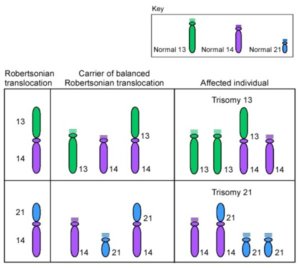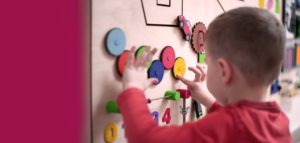To take care of a physically challenged child is tough, to be such a child is even more so. Down Syndrome is said to be one of the most frequently occurring chromosomal abnormalities in humans. K.Chelson Thilak Jeev, tells us all about Down Syndrome in this article…..
We sometimes notice individuals in the society with protruding tongue, slanting eyes, flat nose and walking little differently. We are left in the blue about the knowledge of what they are and why they are different from us. The simple reason is that they may have one chromosome extra in every cell of their body called ‘Down Syndrome’.
It happened a long time back in an asylum for children in England that an English physician called Langdon Down described some features of these individuals and called them ‘Mongoloids’(because the features made them look like Mongolians and the notion that all Mongolians are subnormal). In 1959 Jerome Lejeune and Patricia Jacobs determined the cause for the nature of these individuals as the presence of an extra 21st chromosome instead of a pair. Thereafter, the condition was called Down Syndrome or Trisomy 21.
What is Trisomy 21?
Every human cell has 46 chromosomes in 23 pairs which are thread-like substances composed of DNA and other proteins. These chromosomes carry the genetic information for the cell to develop and function, influencing the features of that cell. Genes that are ‘units of information’ are encoded in the DNA. For a zygote to develop into an individual, an egg from the mother and sperm from the father have to fuse.
The egg carries 23 chromosomes and the sperm carries 23 chromosomes and resultant zygote after fusion of egg and sperm has 46 chromosomes in 23 pairs. For the egg or sperm to have only 23 chromosomes, the germ cells in the reproductive system of the father and mother need to divide meiotically (meiosis) to result in 23 chromosomes, where the pairs simply separate. Meiosis is a cell division where a cell with 46 chromosomes divides to two cells having 23 chromosomes each.
If there is an aberration in this cell division, the 21st pair doesn’t separate and one resultant cell may have 22 chromosomes and the other cell may have 24 chromosomes. When the cell with 24 chromosomes from the father or mother fuses with the cell with 23 chromosomes, the resultant cell has 47 chromosomes with three 21st chromosomes. The cell with 24 chromosomes has the undivided 21st pair.
There is another form of the condition where one triplicated 21st chromosome attaches to the 14th or 15th chromosome and the total chromosome number is 46. This is called the ‘Robertsonian Translocation’ type.
What are the causes of Down Syndrome?
One in seven hundred births is a child with Down Syndrome. The exact cause has not been ascertained yet. In 90% of cases, the mother is the carrier of the extra chromosome and the father is the carrier occasionally. Experts say that anything that could affect cell division could be a cause, for e.g., maternal stress, alcoholism, radiation too.
How to confirm the diagnosis of Down Syndrome?
- At the time of pregnancy, amniotic fluid is collected from the amniotic sac (it covers the fetus) by a procedure called amniocentesis (Transabdominal aspiration of fluid from the amniotic sac) and cells shedded from the growing foetus is studied for the extra chromosome.
- Karyotype presented as a photomicrograph of cell confirms the diagnosis. Cells to be studied are extracted from the body of the person suspected to have Down Syndrome
- Ultrasound studies of the nasal bone of the growing fetus may also suggest Down syndrome (Researches say). Hence it is possible to confirm the diagnosis both before birth and after birth.

Pic courtesy: NIH
How to prevent occurrence?
Down syndrome cannot be cured by medicines. Maternal stress and habits like alcoholism, smoking, malnutrition etc. should be avoided.
If the first child has Down syndrome, the mother has to go for medical and geneticist consultation because the second child shouldn’t also have Down syndrome. So high-risk mothers need to be identified. In Translocation Down Syndrome cases, the mother may even be asked to avoid a second birth.
You may also like: The basics of ADHD explained
What happens to a person with Down syndrome?
The extra 21st chromosome can lead to overexpression of the usual 21st chromosome characters. Physical features which make them look different form the normal population are small head, upward slant of eyes, sunken nasal bridge, protruding tongue, single palmar crease etc.
Many systems in the human body are affected. The child may have delayed physical and mental milestones, have floppy(loose) musculature and joints, severe heart problems like septal defects and patent ductus arterioses, pulmonary distress, bone structural problems and hypoplasias, thyroid problems, sensory deficits, celiac diseases and vision problems like cataracts and retinal detachments.
When their age progresses they may develop Alzheimer’s Dementia (deterioration of mental functions). The presence of extra chromosome makes the afflicted have altered the chemistry of the body compared to the normal population and process of aging and tissue destruction set in at a very early stage in their life, surprisingly even before they are born(the cells are preprogrammed to end their functional life soon).
The anomaly in the epithelial lining and a slightly compromised immunity make them susceptible to infections. Their altered oral musculature makes breathing harder and speech difficult and unclear. These children are bulky often because of their altered basal metabolic rate. The metabolism of every cell is also altered, and thus all physiological functions are altered or impaired.
What is the life expectancy of a person with Down syndrome?
A couple of decades ago, due to ignorance and lack of awareness, the afflicted children died at an earlier age, before 30years due to infections and neglect. But advancements in modern medicine and surgery have remedies for the problems they have and the afflicted can live a life above 70yrs.
What are the special therapies that help?
Nutritional –Metabolic Therapy provided in overseas hospitals and select organizations in India aims at dealing with the metabolic needs of the child. This therapy alone has markedly improved the physiological, physical, social and communicative functions of the afflicted individual. Gluten-free diet and avoidance of cow’s milk and intake of goat, buffalo or soybean milk have a remarkable therapeutic effect on the child.
Modern medical (thyroid therapy for example) and surgical therapies (heart surgeries for septal defects for example) along with rehabilitation improve the quality of living of the afflicted and the caregivers. Centers exclusively for the rehabilitation of the Down Syndrome afflicted provide rehabilitation and assist in settling the lives of the afflicted.
Role of Special Centers :
The physical and mental functions of the afflicted are not on par with their chronological ages. The loose musculature, bone abnormalities and poor endurance (due to heart problems or frequent infections) make them perform less accurately and walk with a wide gait. They have normal emotions and feelings as other people have and they are frequently underestimated. But they have a lot of potential and they can be trained to live an independent and economically productive life on their own. These centers have specific programs and goals to cater to the needs of the afflicted and their families as follows:
Early Stimulation Program:
Early stimulation training program for special senses (like vision, hearing, smelling, touch) social, emotional and physical reactions are started from birth onwards. The first month of life and the early years are absolutely vital to the development of a Down child and much can be done to improve its reactions and hold on life.
Training and rehabilitation of this children:
All children are assessed for developmental, physical, sensory, perceptual, cognitive, social, communicative, speech, daily living, academic, work and coping skills by a team of specialists, special educators, psychologists, physiotherapists, occupational therapists, speech therapists, movement therapists, physical instructors, yoga therapists, sociologists, social workers and vocational teachers.
Children are taught functional academics, daily living tasks including self-care and hygiene activities, environmental manipulation and coping skills and vocation which include weaving, baking, plastic bottle making and minor tailoring according to the needs of the child and the family. Stress is laid on achievement of fine motor skills, movement skills, oral motor skills, reciprocation and environmental exploration without which the child would not learn to live in the world.
Recreation, group and play programs:
These programs in the form of games, music, drama, yoga, crafts, excursions etc., improve presentational skills, acceptable and relevant behaviors in them which would be immensely useful to mainstream them in the community.

Parent Education, Counseling and Prevention:
Down’s Syndrome is thoroughly explained to the parents and social issues are discussed. Parents are taught special therapeutic techniques to deal with their children. Genetic counseling, education regarding marriageable age group, finding out carrier status are some of the functions of the genetic lab program.
With society as it stands at present, services will have to be available in a fine tuned manner to that section of society dubbed ‘incapable’ to give them as high a quality of life as possible.
You may also like: Chronic Kidney Disease and how to battle the same
Down Syndrome Association Of Tamil Nadu- Mathru Mandir
50,Sriman Srinivasan Road, Alwarpet, Chennai-600 018.
Ph: 24970824 and 52112249
Pic courtesy: themighty.com
